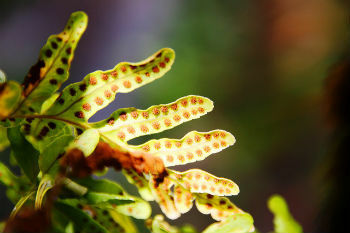Spores are small structures produced in large quantities by bacteria, fungi and plants, capable of generating a new individual.
Because they are extremely small and light, the spores can remain in the air for long periods of time and be moved over great distances. Furthermore, they can also be transported when attached to the body of animals.
The spores are extremely dehydrated and have multiple layers, which make them resistant to heat, chemical and physical agents and radiation.
Bacterial spores
Bacterial spores or endospores act as survival structures when the bacterium finds itself in unfavorable environmental conditions. They are produced by the bacterium and they find themselves freely within. Also, the position of the endospore is used as a form of species identification.
THE sporulation it is the process by which bacteria produce spores when they are in an unfavorable environment for their survival.
In the spore stage, the bacteria can remain dormant for a long time, until conditions return to being favorable. During this period, there is a reduction in metabolism and there is no multiplication and growth.
Spores can remain viable for centuries. They are resistant to heat, dehydration, radiation and pH changes.
When environmental conditions are favorable, the spore absorbs water until it swells and breaks. Thus, germination occurs, producing a cell identical to the parent cell.
In summary, a single vegetative bacterial cell forms an endospore which, under favorable environmental conditions, germinates and gives rise to a bacterial cell. This guarantees the survival of the species.
See too: Exercises on Bacteria
Fungal Spores
The sexual and asexual reproduction of fungi is guaranteed by the production of spores. Fungal spores can be asexual and sexual.
Asexual spores form by mitosis and later cell division, without nuclei fusion. When the spores germinate, they become organisms genetically identical to the parent.
Sexual spores result from the fusion of nuclei from two opposite cross-breeding strains of the same fungus species. This type of spore is less frequent.
Fungal spores can be mobile or immobile. The furniture has a flagellum and is called a zoospore.
See too: Questions about Fungi
plant spores
Some plants, like the mosses and the pteridophytes, also reproduce from spores.
In plants, spores are produced in the sporangia developed inside the serum. Sera are characterized by a cluster of sporangia.
 Sera at the bottom of a pteridophyte leaf
Sera at the bottom of a pteridophyte leaf
In the breeding season, the sera mature and the sporangia produce spores through meiosis. When the sporangia break, they release the spores into the air. From there they can be dispersed, allowing plants to colonize new areas.
When the spores find a suitable substrate, with moisture, the germination.
Learn more about the subject, read also:
Asexual Reproduction
